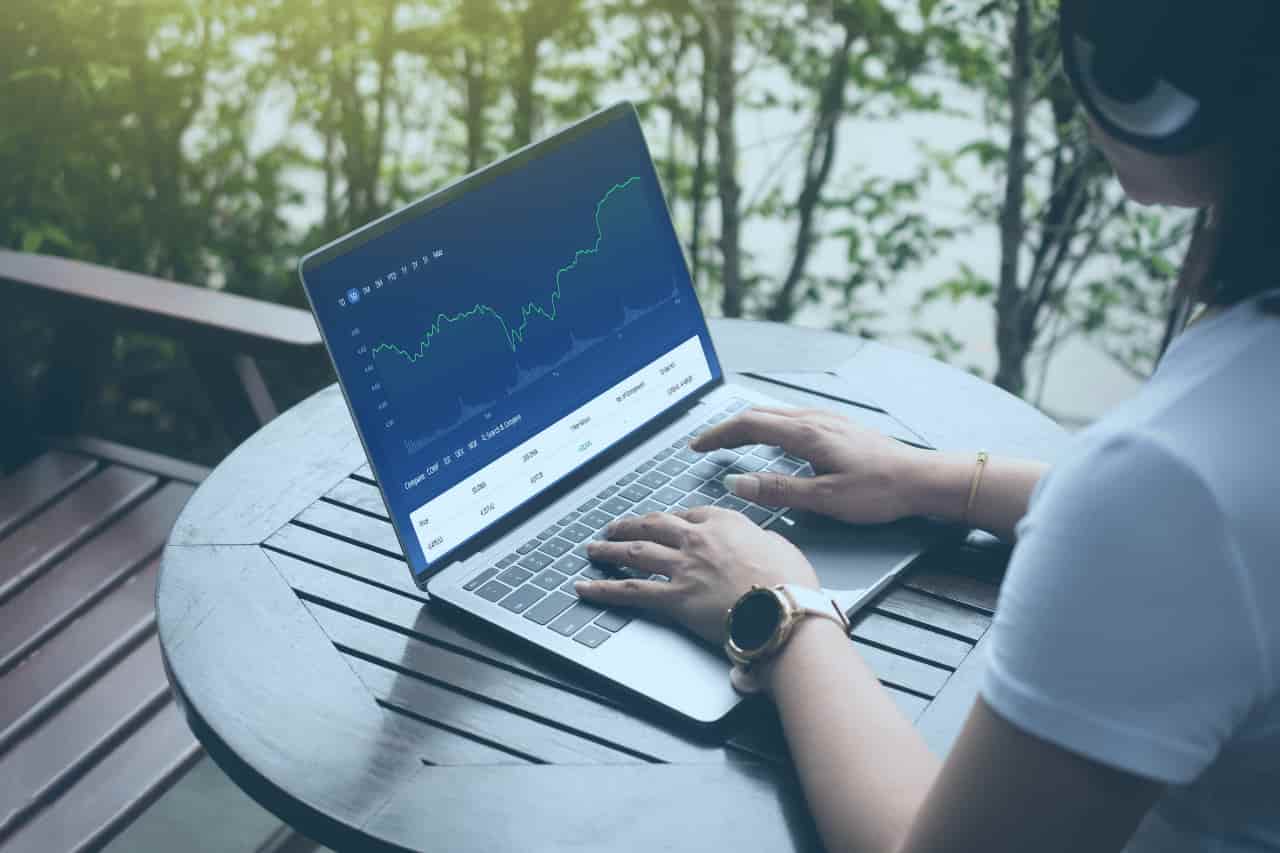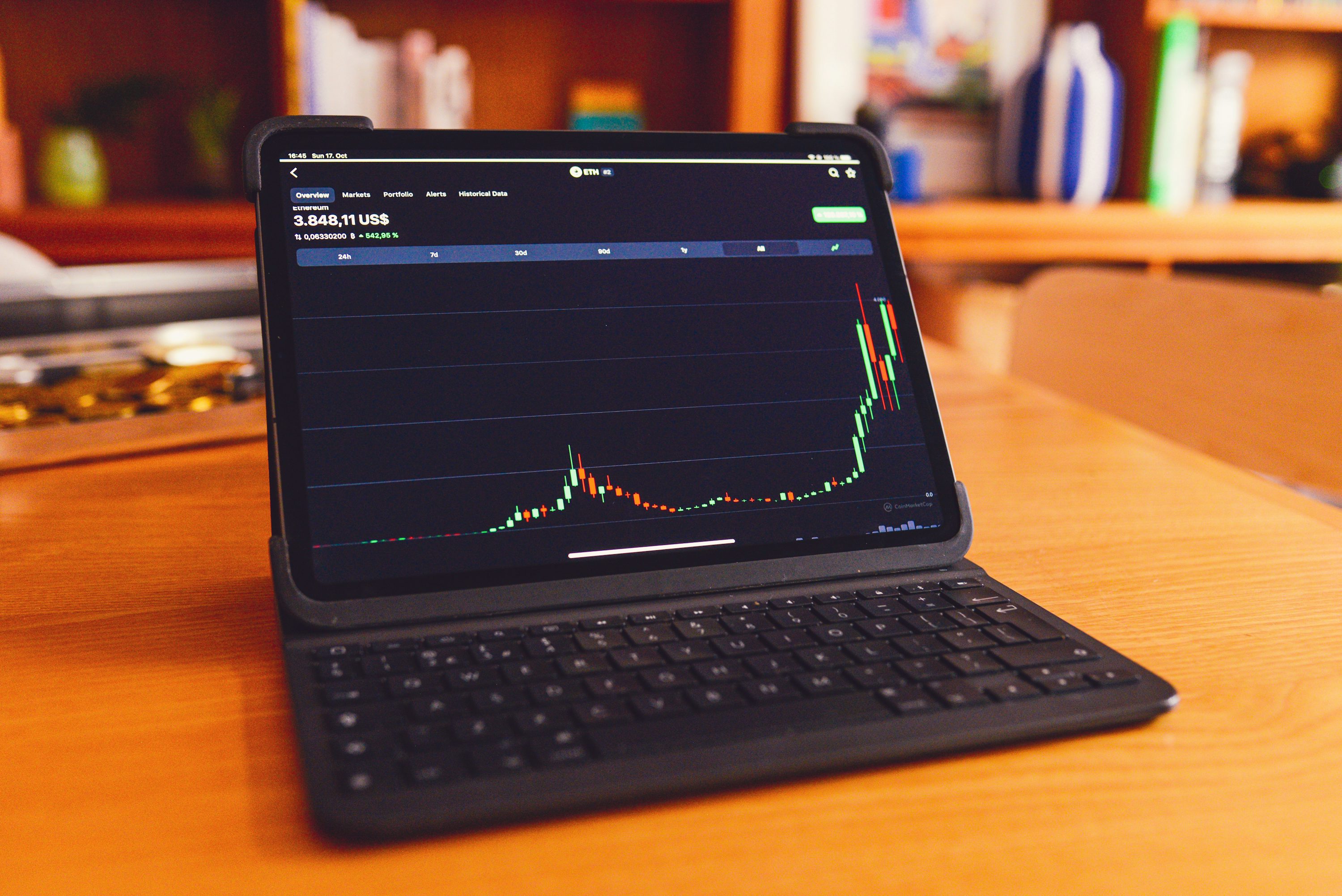You watch S&P 500 futures react to a news beat, and your chart fills with noise, and you want Day Trading Tips that cut through the clutter. This guide breaks index trading into clear steps, including reading intraday charts and price action, spotting momentum and support and resistance, managing risk, and planning entries and exits for scalps or longer intraday trades across Dow and Nasdaq futures while keeping an eye on volatility, liquidity, and execution. Ready to gain precise, actionable knowledge and the confidence to start day trading indices successfully and profitably.
To help you start day trading indices successfully and profitably, Goat Funded Trader's prop firm provides funded accounts, clear rules, and a supportive community so you can practice setups, refine trade management, and scale without risking your capital.
What Are Indices in Day Trading?

Indices in day trading represent a way to gauge the overall performance of a group of stocks rather than focusing on individual companies. Instead of tracking a single share like Apple or Amazon, indices bundle many stocks together, such as those in the S&P 500 or the Nifty 50. This collection reflects broader market trends or the health of an entire economy.
Trading indices often involves contracts for difference (CFDs), which let traders speculate on price changes without owning the underlying stocks. Day trading indices requires knowing market hours, tracking political and economic news, and understanding factors like inflation, interest rates, and investor sentiment that influence prices. Sector-specific factors also come into play for commodity or sectoral indices.
Day traders use indices as diversified instruments to speculate on broader market movements. Compared to trading single stocks, indices reduce company-specific risks because they represent many businesses. Traders can jump into sectors, countries, or entire economies by choosing relevant indices. This diversity helps create more stability and predictability, though indices can still be volatile.
Indices are calculated using different weighting methods. Price-weighted indices assign greater influence to stocks with higher prices, so movements in expensive stocks sway the index more. Market capitalization-weighted indices, the most common approach, weigh companies by their total market value, making larger companies more impactful. Equal-weighted indices give every stock the same weight regardless of size, giving a more balanced market snapshot.
These indices act as barometers for market sentiment. When traders say "the market is crashing," they usually mean key indices are declining sharply, indicating a widespread drop in stock values. Popular global indices include the Dow Jones Industrial Average, FTSE 100, DAX, BSE Sensex, CAC 40, Nasdaq Composite, and the EURO STOXX 50, each reflecting its respective market.
People can trade indices almost around the clock if they're willing to venture into international markets. The trading hours for indices vary based on the stock exchange they're listed on and the broker used to place trades. Some platforms offer after-hours trading, while others do not. UK and European indices like the FTSE 100, DAX 40, and CAC 40 can be traded between 8:00 AM and 4:30 PM GMT, although extended hours run until 8:00 PM. US indices have pre-market trading from 4:00 AM to 9:30 AM (ET), regular trading hours from 9:30 AM to 4:00 PM, and after-hours trading until 8:00 PM.
Get 25-30% off Today - Sign up to Get Access to up to $800 today.
For traders looking to sharpen their skills in index day trading, prop firms like Goat Funded Trader offer valuable resources and structured programs tailored to help traders grow responsibly in this dynamic market.
Goat Funded Trader is a prop firm that gives you access to simulated accounts up to $800K with trader friendly conditions no minimum targets, no time limits, triple paydays, up to 100% profit split, and a 2 day payment guarantee with a $500 penalty for delays and over $9.1 million paid out to more than 98,000 traders. Choose customizable challenges or instant funding and sign up to Get Access to up to $800 today with 25 30% off.
Related Reading
- Can You Make Money Day Trading
- How Old Do You Have to Be to Day Trade
- Options Trading vs Day Trading
- Day Trading Success Stories
- Day Trading Crypto vs Stocks
- Day Trading Psychology
- Day Trading as a Side Hustle
- Why is Day Trading Restricted
Popular Indices For Day Trading

S&P 500
The S&P 500 tracks 500 large US companies and gives day traders deep liquidity and tight spreads. Traders use E-mini S&P 500 futures, the SPY ETF, or cash index CFDs to capture intraday moves. Price action tends to show steady trends with bursts around economic data and Fed announcements, which move volume and volatility. Use VWAP as an intraday reference, monitor level 2 and order flow for institutional activity, and pair that with moving averages or RSI for entries. Scalpers and momentum traders favor this index because slippage stays low during core U S hours.
Nasdaq 100
This index concentrates on the biggest non-financial Nasdaq names and leans tech, so it swings harder than broad market indices. Day traders trade E-mini Nasdaq 100 futures or the QQQ ETF for quick momentum plays. Expect larger intraday gaps at earnings season and heightened volatility during U S market hours. Tick charts, volume profile, and breakout setups work well here. Watch correlations among high beta names to avoid being caught by sector-wide moves.
FTSE 100
The FTSE 100 lists Britain s most prominent companies and reacts strongly to UK economic data, oil prices, and bank news. Traders use FTSE futures or London-listed ETFs to trade intraday ranges. Volatility usually peaks during London hours and can shrink during overlapping U S sessions. Range trading and mean reversion setups often perform well when liquidity is steady. Keep an eye on currency moves because Sterling swings change index behavior and margin requirements.
DAX 40
Germany s DAX 40 is a large-cap, capitalization-weighted index with high daily volume and sharp moves during European trading. Day traders access it through DAX futures or European ETFs and look for quick directional runs after macro releases or German industrial data. Order book depth can thin outside core hours, so monitor spreads and potential slippage. Use momentum indicators and short-term support and resistance, and be ready for sudden gaps tied to overnight global news.
CAC 40
The CAC 40 covers France s largest firms and shows moderate liquidity compared with some other European indices. Traders often find repeatable intraday patterns around Paris open and EU data releases. Volume-based strategies and trend following into breakout moves work when volatility rises. Watch sector concentration like luxury and energy, which can push the index in one direction quickly. Manage leverage since thinner markets can widen spreads.
Nikkei 225
Japan s price-weighted Nikkei 225 uses stock prices rather than market cap, so big price moves in a few names can sway the index. Day traders trade Nikkei futures or ETFs during Asian hours and watch how the index correlates with the U.S. close and currency moves in the yen. Volatility can be moderate to high, with reactionary jumps on global risk sentiment. Use market hours to your advantage and consider how overnight geopolitical or commodity news translates to intraday setups.
Dow Jones Industrial Average
The DJIA tracks 30 major U S companies and is price weighted, so a few high-priced names influence the index strongly. Traders use Dow futures or the DIA ETF for intraday trades that often move in step with headline risk and earnings from big industrial or consumer names. Expect moderate volatility and reliable liquidity, which suits swing to intraday strategies that follow clear trend or range signals. Monitor bid-ask spreads during low liquidity windows to avoid excessive slippage.
NASDAQ Composite
This broad Nasdaq index captures thousands of listings, including mega caps and smaller growth firms. Day traders use proxies such as broad Nasdaq ETFs or index futures to capture tech sector momentum and rapid intraday swings. The Composite tends to amplify tech news and biotech catalysts, producing volatility spikes and rotation between large and small caps. Combine volume analysis, support resistance, and momentum filters to isolate high probability intraday trades.
Cross-index rules and practical trade mechanics
Which index fits your style and risk tolerance? Match instrument choice to session and liquidity: futures for leverage and round-the-clock access, ETFs for tight spreads and simpler overnight handling, CFDs for flexibility in some regions. Use tight risk management with stop orders, watch margin, leverage, and slippage factor when volume drops. Track correlations across indices, economic calendar events, and order flow to refine entries and exits.
Get 25-30% off Today - Sign up to Get Access to up to $800 today.
Goat Funded Trader is a prop firm that gives you access to simulated accounts up to $800K with the most trader-friendly conditions in the industry, including no minimum targets, no time limits, triple paydays, and up to 100 percent profit split. Join over 98,000 traders who have collected more than $9.1 million in rewards, all backed by our 2-day payment guarantee with a $500 penalty for delays; choose customizable challenges or instant funding and sign up to Get Access to up to $800 today with 25 to 30 percent off.
Strategies That Work Best When Day Trading Indices

Opening Range Breakout
Watch the first 15 to 20 minutes after the cash market opens. Mark the high and low of that opening range on a 1-minute or 5-minute chart and note volume. A push above the opening range high on substantial volume signals a buying opportunity. A break below the opening range low signals a shorting opportunity. Use index futures such as ES and NQ for cleaner fills and lower slippage around the open, and use SPY or QQQ if you prefer ETFs but accept wider spreads and potential tracking noise near the open.
Enter on the break or a quick pullback to the broken range. Place a stop loss below the breakout candle low when buying, or above the breakout candle high when selling. Target a fixed multiple of the risk, for example, 1.5 to 3 times your stop distance, or use intraday structure levels like the first significant support or resistance, VWAP, or a measured move based on the range size. Keep position size small relative to account equity because the open produces higher volatility and occasional stop hunts.
Trend Following
Use a 20-period EMA or a 50-period SMA on a 5-minute or 15-minute chart to define the intraday trend. If price stays above the EMA or SMA and volume confirms upward moves, favor long entries on pullbacks. If price remains below and volume confirms downside momentum, favor shorts. Add VWAP and a higher timeframe trend check on the 60-minute or 30-minute chart to avoid trading against a larger move.
Enter on pullbacks to the moving average or VWAP that hold as support or resistance. Use ADX to filter weak trends; require ADX above 20 to 25 for stronger setups. Trail stops using the moving average or an ATR-based trailing stop, so winners run while you protect gains. Position size using a fixed percent risk model, for example, risking 0.25 to 1.0 percent of capital per trade, because leverage and margin on index futures amplify both profits and losses.
Reversal Strategy
Look for exhaustion at extremes of session structure, such as session high-low, prior day high-low, or large gap fills. Indicators like RSI, Bollinger Bands, and MACD divergence help highlight overbought or oversold conditions, but require price action confirmation before you trade against the prevailing move. Watch for reversal candlestick patterns that show rejection and increased volume at those levels.
Enter only after momentum shifts. For example, wait for a bullish engulfing candle on heavy volume after RSI drops below 30, or a bearish rejection at an upper Bollinger band with negative divergence. Keep stops tight because reversals can fail quickly; size positions smaller than trend trades and avoid picking bottoms or tops in strong trending markets. Use order flow cues, like a change in tape or a collapse in buying interest, to confirm the setup before committing capital.
Breakout and Retest
Identify clear horizontal support and resistance, pivot points, supply and demand areas, or value areas from the volume profile. When a price breaks a level, do not always chase the immediate breakout. Wait for the cost to return and retest the broken level. A clean retest that holds on low selling volume for a long entry or low buying volume for a short entry gives a higher probability entry and a tighter stop.
Place a limit order near the retest and a stop beyond the retest swing high or low. Confirm the retest with volume contraction on the pullback and volume expansion on the continuation. Use partial scaling out at the first structure level and trail the remainder with ATR or a short moving average. Monitor liquidity and spreads, and avoid retest entries during thin pre-market or post-market activity or directly around major economic prints.
Questions for you: which index do you trade, and what timeframes do you prefer for entries and exits?
How to Start Day Trading Indices

Pick a Broker You Can Trust and Rely On
Choose a regulated broker with transparent fees, tight spreads, fast execution, and a robust trading platform. Check for regulation from agencies such as the FCA, ASIC, CFTC, or local equivalents, and confirm the broker offers the instruments you want: index futures, CFDs, ETFs, or options. Test order types, slippage, and execution speed on a demo account, then place small live orders to verify fills, spreads, and margin behavior.
Pick the Right Index Instrument for Intraday Trading
Decide whether you want exchange-traded futures, OTC CFDs, ETFs, or options for intraday moves. Futures provide precise contract size, tick value, and centralised liquidity, while CFDs give flexible lot sizes and often extended trading hours, but can carry financing costs. ETFs limit leverage and can suit momentum or breakout strategies; options let you control risk with defined premium costs. Match contract specifications, tick size, trading hours, and margin rules to your timeframes and appetite for leverage.
Read Price Action, Indicators, and News Together
Use price action, support and resistance, volume, and order flow as your core signals. Layer RSI, Moving Average Convergence/Divergence (MACD), moving averages, or VWAP to confirm momentum and trend. Run multiple timeframes: a 1-minute or 5-minute chart for entries, a 15 or 60-minute chart for context, and a daily chart for bias. Track an economic calendar for releases like CPI, jobs, and central bank events that create intraday volatility and widen spreads; plan around those events to avoid surprise price gaps.
Place Trades with Firm Risk Controls
Predefine direction, entry, stop loss, and take profit before you send the order. Size positions so you risk a small percent of your equity per trade, use fixed stop loss distances or ATR-based stops, and calculate point value to know exact dollar risk. Use OCO orders or bracket orders when available, prefer limit entries for better fill control, and keep margin and leverage low enough to avoid margin calls during spikes.
Monitor Positions Actively and Adjust Rules-Based
Watch liquidity, spread widening, and intraday volatility; move stops to breakeven only on confirmed follow-through, and use trailing stops to lock profits when the trend runs. Scale out of winners if you trade larger size, exit before market close to avoid overnight gap risk, and set automated alerts for price, time, or news triggers. Keep a trade journal that records entry reasons, management decisions, and outcomes so you can refine entries, exits, and position sizing after each session.
Get 25-30% off Today - Sign up to Get Access to up to $800 today.
Goat Funded Trader is a prop firm that gives you access to simulated accounts up to $800K with the most trader-friendly conditions in the industry, including no minimum targets, no time limits, triple paydays, and up to 100 percent profit split. Join over 98,000 traders who have collected more than $9.1 million in rewards, all backed by our 2-day payment guarantee with a $500 penalty for delays; choose customizable challenges or instant funding and sign up to Get Access to up to $800 today with 25 to 30 percent off.
Related Reading
- How Much Can You Make Day Trading With $1,000
- What is Liquidity in Day Trading
- Can You Start Day Trading With $100
- Day Trading as a Career
- Why is Pattern Day Trading Illegal
- Are Day Trading Courses Worth It
- Best Brokerage for Day Trading
- Best Cryptos for Day Trading
- What is Day Trading Buying Power
- Best Time Frame for Day Trading
Benefits of Day Trading Indices

1. High Liquidity and Volatility
Indices such as the NASDAQ 100 and DAX 40 are known for their high liquidity, which means there is a large number of buyers and sellers actively trading. This liquidity allows traders to open and close positions quickly with minimal risk of price slippage or delays. Moreover, these indices exhibit significant volatility during trading hours, driven by economic data, corporate earnings, and global events. This price movement creates multiple profit opportunities within a single day, making indices an attractive market for day traders seeking fast-paced action.
2. Diversified Market Exposure with Lower Risk
Trading indices offer inherent diversification because an index represents a basket of stocks rather than a single company. If one stock in the index performs poorly, gains in other stocks often offset the loss, reducing overall volatility compared to individual stock trading. This diversification acts like a combo meal, offering balanced satisfaction and less risk by spreading exposure across many companies. It allows traders to benefit from the general market direction while minimizing the impact of any one underperforming stock.
3. Leverage and Margin Efficiency
Many brokers provide substantial leverage on index trading, enabling traders to control larger positions with a relatively small amount of capital. For example, a leverage ratio of 1:50 means a $100 deposit can manage a trade value of $5,000. This leverage amplifies potential profits from intraday price swings. However, it also increases risk, so proper risk management is essential. Leverage makes day trading indices accessible and capital-efficient for those looking to maximize their trading power without tying up significant funds.
4. Flexibility and Trading Strategies
Indices can be traded using various strategies, including breakout trading during sharp price moves and range trading when prices fluctuate within levels. These strategies allow traders to capitalize on different market conditions throughout the trading day. The broad market exposure in indices also means fewer complexities than analyzing multiple individual stocks, helping traders focus more on market trends and price action.
5. Quick Turnaround and Avoidance of Overnight Risks
Day trading requires opening and closing positions within the same day, which means traders avoid the risks associated with holding positions overnight, such as gaps caused by after-hours news. This quick turnaround is suitable for traders who prefer not to be exposed to unpredictable events outside regular trading hours.
Risks Of Day Trading Indices

Market Volatility
Indices can experience significant price fluctuations within minutes or hours due to economic news, geopolitical events, and market sentiment shifts. This volatility, while creating opportunities for profits, also increases the unpredictability of trades, making losses swift and sizable.
Leverage and Margin Risks
Day traders often use leverage, borrowing funds to increase trade sizes. While leverage can amplify gains, it equally magnifies losses. A small adverse move in an index's price can lead to significant financial damage, sometimes exceeding the initial investment and resulting in margin calls requiring immediate additional capital.
Emotional and Psychological Strain
The rapid pace and constant decision-making in day trading can cause intense stress and emotional reactions. Anxiety and impulsive trades driven by fear or greed often lead to mistakes and losses. Maintaining discipline and emotional control is crucial but challenging for many traders.
High Transaction Costs
Frequent buying and selling attract commissions, fees, and short-term capital gains taxes. These expenses accumulate and can erode profits, especially impacting smaller accounts where the cost-to-profit ratio is higher.
Time and Effort Commitment
Successful day trading requires dedicating considerable time to market research, analysis, and real-time monitoring. This demand can be overwhelming, particularly for individuals balancing other professional or personal responsibilities.
Risk of Overtrading and Poor Strategy
Day traders may fall into the trap of overtrading, executing too many trades without a well-defined strategy. Without proper risk management and clear trading plans, the odds favor losses over gains. Emotional trading and chasing the market increase exposure to unnecessary risks.
Liquidity and Slippage Issues
Although indices are generally liquid, during extreme market conditions or economic announcements, liquidity can dry up. This can cause slippage, where trades execute at worse prices than expected, further increasing trading risks.
Get 25-30% off Today - Sign up to Get Access to up to $800 today.

Goat Funded Trader gives you simulated accounts up to $800,000 with the most trader friendly conditions in the industry. You trade with no minimum profit targets and no time limits. You can collect triple paydays and keep up to 100 percent of profits. Join more than 98,000 traders who have already taken home over $9.1 million in rewards. We back payouts with a two-day payment guarantee and a $500 penalty if we miss that window. Choose a customizable challenge or opt for instant funding and start trading right away. Sign up to get access to up to $800K today, with 25 to 30 percent off.
How Goat Funded Trader supports classic index day trading tactics
Use the accounts to sharpen scalping, momentum, and range strategies on S&P futures or index ETFs. The simulated setup reproduces order flow, spreads, and volatility so you can test entry triggers, moving average crossovers, support and resistance plays, and breakout rules: practice using tick charts, one-minute charts, and five-minute timeframes. Focus on liquidity and spread behavior around the open and economic news. Which setups give you a positive edge after fees and slippage?
Community Scale and Payout Reliability
Over 98,000 traders use the platform, and payouts exceed $9.1 million. That level of adoption gives you a large pool of shared feedback on intraday setups, execution quirks, and platform features. Payment reliability matters for traders who depend on consistent cash flow. The two-day guarantee with a $500 penalty reinforces that commitment.
Ready to Practice Index Day Trading with a Professional Scale?
Sign up and get access to up to $800K today, take advantage of the 25 to 30 percent discount, and pick the funding path that fits your timeframe and strategy. Which instrument will you master first, S&P futures or a broad index ETF?
Related Reading
- Best Rsi Settings for Day Trading
- Best Moving Average for Day Trading
- Day Trading Checklist
- Day Trading Technical Analysis
- Best Markets for Day Trading
- Day Trading Indicators
- Stocks for Day Trading
- Day Trading Books
- Best Tools for Day Trading
- Day Trading Rules
- Day Trader Salary
- Best Day Trading Stocks
- How to Day Trade for a Living
- Day Trading Patterns
- Best Stocks to Day Trade
- Is Day Trading Legal
.svg)
.avif)



.avif)





.svg)

.svg)